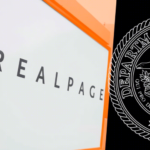Landmark Deal Addresses Risks and Innovations in Artificial Intelligence
In a landmark development, the European Union has achieved a major milestone by finalizing the world’s first comprehensive set of artificial intelligence (AI) regulations. This agreement, reached after extensive negotiations among representatives from the European Parliament and the 27 member countries, sets the stage for a legal framework governing the use of AI technologies, which have shown both transformative potential and significant risks.
European Commissioner Thierry Breton announced the achievement with a tweet, emphasizing the EU’s role as the first continent to establish clear AI usage rules. The conclusion of this deal follows arduous negotiations, including a 22-hour initial session, highlighting the complexity and importance of the legislation. Despite securing this political victory, some civil society groups have expressed reservations, calling for further refinement of technical details in the AI Act to better safeguard against harms posed by AI systems.
A critical aspect of the EU’s AI Act is its initial focus on mitigating dangers from specific AI functions, categorized by their level of risk. Lawmakers have since expanded the Act to encompass foundation models, such as those powering services like ChatGPT and Google’s Bard chatbot. These advanced systems, also known as large language models, are trained on extensive online data and possess the capability to generate new content, setting them apart from traditional AI. Under the new regulations, companies developing these models must adhere to stringent requirements, including technical documentation, compliance with EU copyright law, and detailing training content. Additionally, the most advanced models, which present systemic risks, will undergo enhanced scrutiny.
The AI Act also addresses the contentious issue of AI-powered face recognition surveillance systems. European lawmakers initially advocated for a complete ban on public use of face scanning and other remote biometric identification systems due to privacy concerns. However, a compromise was reached allowing member country governments to use these technologies for combating serious crimes such as child sexual exploitation and terrorism. Despite this agreement, rights groups have raised concerns about potential loopholes in the Act, particularly the lack of protection for AI systems used in migration and border control and the option for developers to classify their systems as lower risk.
Image by Gerd Altmann from Pixabay

Claire Marshall is the dedicated Editor-in-Chief of NewNoted, with a lifelong passion for journalism and a commitment to transparent and responsible reporting. Hailing from Charleston, South Carolina, she brings a love for storytelling, a devotion to ethics, and a deep appreciation for diverse perspectives to her role at the helm of NewNoted.



